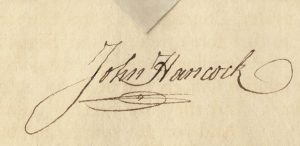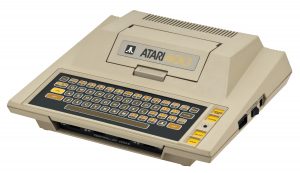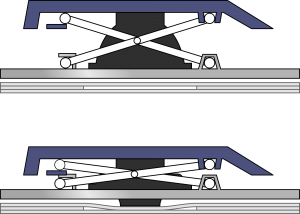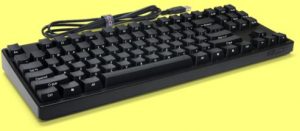“Putting pen to paper” has a ring to it, yeah? More than a nifty phrase, putting pen to paper is a sensuous experience; tactile, visual, olfactory, auditory. I love putting pen to paper, always have. Especially if it’s nice paper. Extra-especially if it’s the right pen.

My pen-of-choice has a barrel that’s not too chubby, a section grip that’s not too skinny, and a very fine point. The two I’m running with these days are the Pilot G-2 Ultra-Fine and the Uniball Signo Ultra-Micro 207, both with a line-size of 0.38mm.
Of course, in our high-tech modern times, we’re more likely to write an email than a letter, more inclined to send texts than memos. We compose shopping and to-do lists on the “notes” apps of our smart phones. Making credit card purchases with illegible finger-signatures is becoming commonplace, and e-signatures on e-docs is a thing.
Despite the proliferation of pixelated communications, there are still plenty of forms that require a genuine John Hancock and plenty of situations where virtual writing won’t do.
Personal preference is a factor, as well. I prefer to write poetry long-hand. Poetry and note-cards for special occasions. And that’s about it.
I find typing faster, neater, and (if I pay attention to basic ergonomics) physically less stressful. Yes, putting pen to paper delights the senses, but, for me, the sensuous pleasures of putting words on a screen are greater by far – which brings me to the keyboard.
There are more types of keyboards in more shapes, sizes, and layouts that you might imagine. Just Google “computer keyboard” to see what I mean. An intimidating array, but the variety is mostly about the bells and whistles. Fundamentally, the choice comes down to the Big 3: membrane, scissor-switch, mechanical.
A membrane keyboard is made by embedding a set of pressure pads into a flat, flexible surface. Outlines and legends are printed around and on each pad to create the keys. Push on a “key,” the pressure makes the electronic connection, something appears on your screen.
Membrane keyboards are durable and easy to keep clean. Since the entire keypad is a single, level surface, there are no cracks or crevices for dirt to seep through, no grooves to catch dust, no possibility of crumbs accumulating beneath the keys.
Lightweight and long-lasting, the membrane keyboard is a popular choice . . . but, surely, not among writers? While the membrane keyboard makes a nice, neat package, typing on the dang thing is clunky and slow. I know. I used one. It was the default for most early home computers, like the Timex Sinclair 1000 and the Atari 400.
Anyone with a modicum of typing skill found the membrane keyboard frustrating, but it was the vehement antipathy gamers felt for it that drove the industry to engineer improvements.
One early upgrade was the dome-switch keyboard. Dome-switches are made of polyurethane or metal. They compress when pressed. Set an array of dome-switches under a rubber or silicone keypad, and you are good-to-go. Dome-switch keyboards are accurate, reliable, and provide users crisp, tactile feedback to let them know a command has registered.
The scissor-switch keyboard is a special-case dome mechanism; a set of three plastic membranes, topped by dome-shaped switches, topped by keys. Press a key, the “scissors” mechanism depresses, linking the keycap to a plunger. The plunger pushes through a hole in the middle membrane, connecting all three and creating an electrical circuit that sends input to the computer.
Typically found on laptops and low-profile keyboards, the scissor-switch doesn’t have to travel far to depress the plunger, the keys don’t require much pressure, and the action is pretty quiet . . . which can be good or bad, depending. Scissor-switch keyboards are widely used and way popular.
The third option is the mechanical keyboard. Hands-down, clear-winner, no-contest. Mechanical keyboards are the best.
With a mechanical keyboard, each key has its own individual, physical switch. Press a key, the switch goes down, a signal is sent, and you and your computer know the key has been pressed.
So what? No big deal? You and your computer don’t need a fancy mechanical keyboard to tell you when you’ve pressed a key? Ok, but how much effort do your keystrokes require? Bet you have to push a key as far as it will go before you see a letter pop up on your screen.
With mechanical keyboards, you get to choose how much pressure will be required for the computer to register a keystroke and how loud/quiet those keystrokes will be. With mechanical keyboards, you get a custom fit.
Gamers don’t like noisy keyboards and hard-to-press keys. They like quiet keystrokes (so they can hear the game) and super-quick response times. Writers, on the other hand, favor keyboards that give their fingers a little push-back and reward each stroke with an audible “click”. Thanks to the Cherry MX mechanical switch, you can “cherry pick” the key that provides exactly the sound, operational pressure, and response you desire. THIS article has the run-down on Cherry MX color-coded switches, check it out.
My keyboard? The Filco Majestouch Ninja Ten-Keyless Mechanical with Cherry MX blue switches. I could sing its praises till the cows come home, omg. I flat love it.
Granted, “putting fingers to keyboard” doesn’t have have the alliterative charm of “putting pen to paper.” It doesn’t evoke romantic images of Shakespeare, or Austen, or Marie de France. It isn’t inherently classy. It’s descriptive. It’s real. It’s how I write.





Like you, my pen of choice is the Pilot G2. However, I write poetry with a mechanical pencil, because I think—regardless of whether or not I am right—that a sharp point = a sharp mind. Besides which, it’s got to be a pencil, so I can erase a kazillion times until I have the words just right, with the physical sensation of the contact between pencil and paper keeping it real for me.
My gamers like a loud and resistant keyboard, because they like the physical sensation of attacking the keys (no doubt, in the same way they are attacking their virtual enemies.)
All in all, I think most folks don’t put a lot of thought into their choice of writing devices, but were you to present them with options, they’d suddenly have clear preferences. Would that make them more likely to write? —Who knows . . .?
Many of my students use the mechanical pencil for just that reason. I prefer the angled, arrow-shaped point of a sharpened #2 to the mechanical pencil’s slightly flat-topped lead, and make sure I’ve got a good sharpener on hand. I use pencils more for drawing than writing, which means I rarely use them at all. Writing called cues in a script is the exception, but once the cues are set, I go back and ink them in. Otherwise, I like to letter in ink, even if it’s just letters in a word puzzle. I definitely prefer pen if I’m writing something substantive, so instead of kazillion erasures, I do a gazillion cross-outs, then cross out half a page, then draw arrows showing where sentences need to move, then rewrite the page. I may do this many times over. Mostly a waste of paper, but sometimes, after a bunch of drafts, I end up going back for a previously-discarded sentence or fragment, so it’s probably good I don’t erase them beyond retrieval.
Your gamers are definitely swimming against the tide — but after consulting with my gamers, I learned it’s not so much about hearing the game as hearing the conversations they are having with their friends while playing and/or hearing the music they play as background to their fun.
You’re probably right that most folks don’t pay much attention to their pens and pencils. The crowds I hang with, though… stage managers and writers are both way picky about their pencils and pens; all have their favorites. And all my nerdy friends think long and hard when choosing a new keyboard. Guess my social circles provide me a biased view on writing implement preferences.